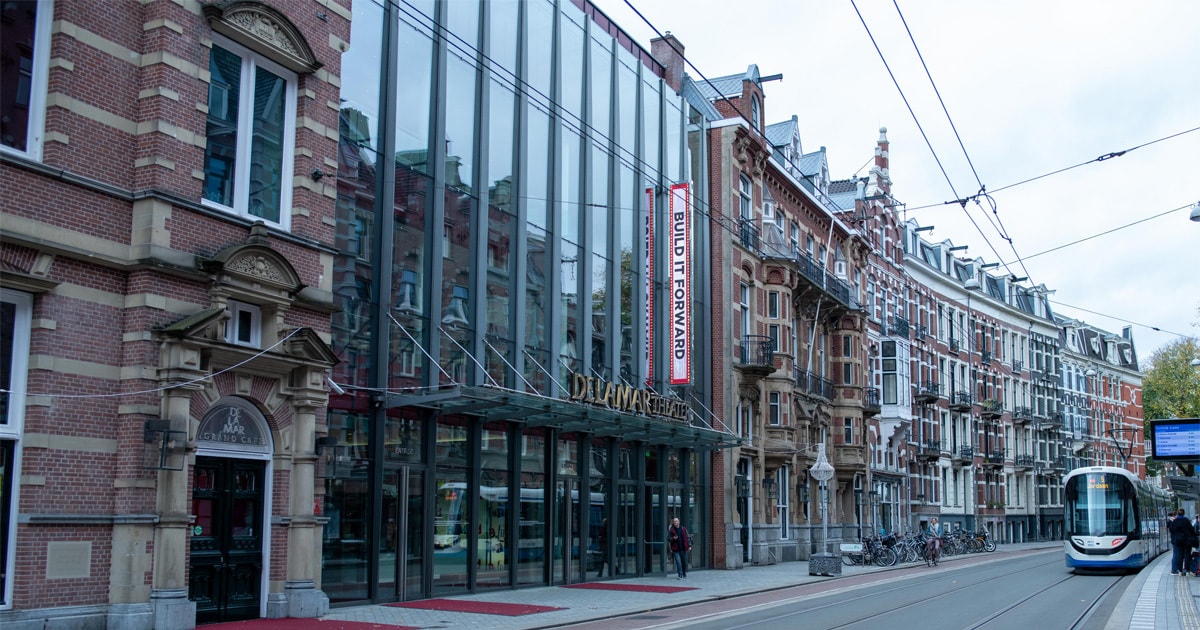
TomTom recently announced a big pivot, its next chapter in which the mapmaker is setting itself up to create “the smartest maps on the planet.” Working with partners, customers and communities around the world, TomTom is building a standard base map, designed to foster innovation.
Before the company announced its new strategy on November 2, it aired a documentary called Build It Forward to employees on October 26.
Build It Forward examines the importance of location technology, the role maps play in daily life and how they will need to evolve, through interviews with academics, map historians, mapmakers, EV experts, carmakers and tech companies. It’s capped with a window into how TomTom makes its maps.
Shown at the DeLaMar theater in Amsterdam, a cinema in Poland and streamed to thousands of employees watching from home and at local viewing parties around the world, it was an event for the TomTom history books.
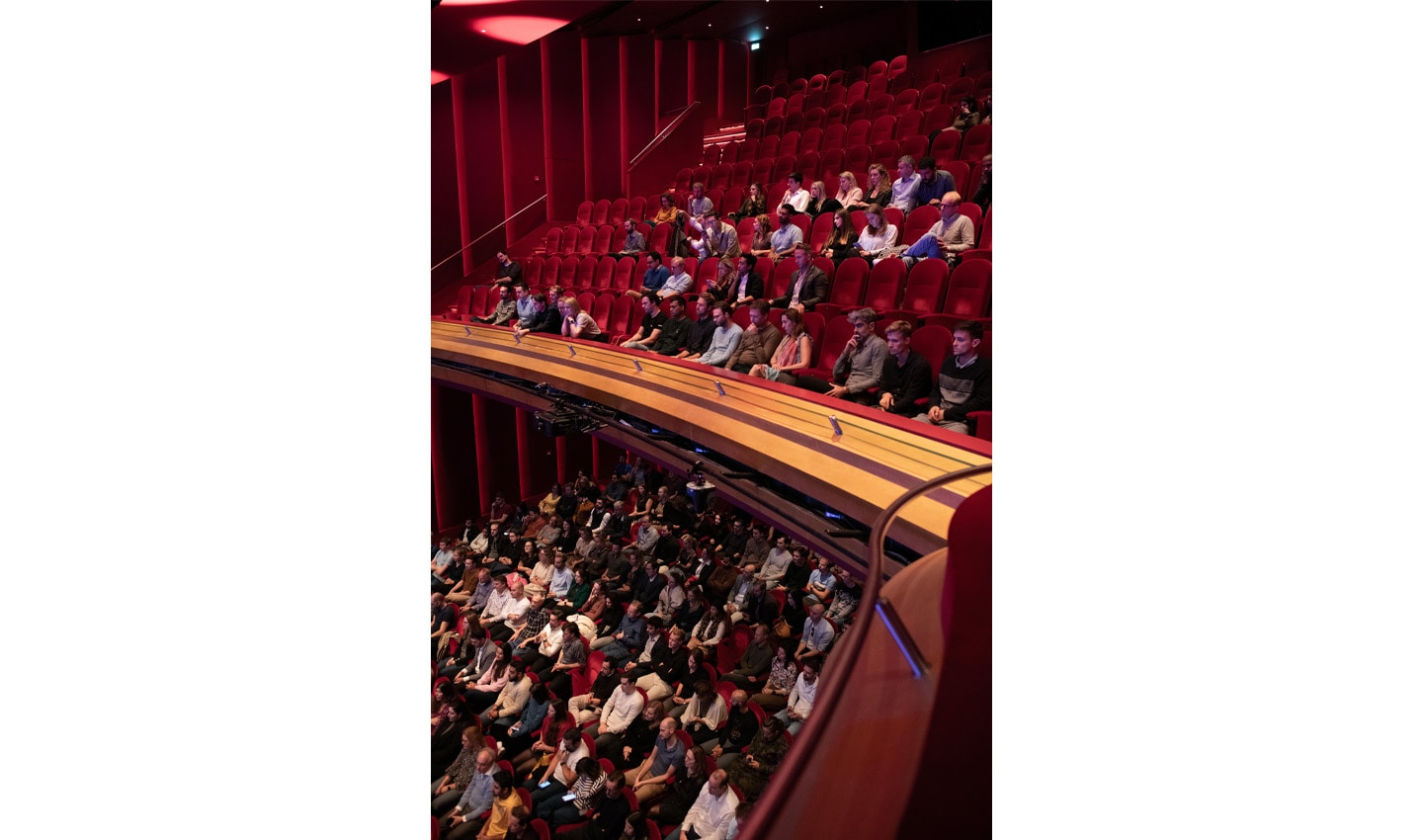 The DeLaMar Theatre in Amsterdam played host to the Build It Forward premier.
The DeLaMar Theatre in Amsterdam played host to the Build It Forward premier.We sat down with Becky Churilla, Head of Content, to ask her how the Build It Forward documentary came to life.
TomTom: So, how did Build it Forward happen? What was the thinking that led to making a documentary?
Becky Churilla: When our in-house agency was first approached to communicate the new strategy, vision and mission to employees, we were asked to do more traditional comms centered around filming people giving presentations. It was focused on what information needed to be conveyed, as opposed to the best way of communicating it.
But we wanted to go big, match the company's ambition — create something that would get people excited and reflect the scope of TomTom’s plans through execution of the creative.
With the rise in edutainment on YouTube and Netflix post Covid, it made sense to create content designed specifically for the medium people were primed to consume. Our story at TomTom is rich and multi-faceted – it felt natural to take an illustrative, narrative approach to communicate the problems the world is facing, the role of location tech plays in solving those problems, the ambitions of our clients and partners and our employees’ way of working.
For good measure, we also tossed in a couple of scripted segments – including an early 2000s-inspired commercial for TomTom GO Navigation – to lay out some Easter eggs and crack some inside jokes. Things that make employees feel seen.
We also knew we didn’t want to take a ‘rah rah’ approach. The first reason being that our employees, a large percentage of whom are developers and engineers, are too smart for that and naturally skeptical of ‘fluffy’ marketing.
More practically, if we took an outside-in approach, we’d be able to use the content externally and create a fresh stream of video assets. Perfect opportunity to create a large batch of content in one go, saving a lot of time and money in the process, and setting up the team to work more efficiently down the road.
This documentary-style, non-testimonial format of storytelling is also helping set a standard for collaborating on future comms with clients and partners.
TT: Okay, that’s a lot of goals wrapped up in one project!
BC: Yes 😊 and that’s typical for us. The agency is less than five years old, we’re constantly growing and pushing ourselves. I approach every project with the mindset of achieving multiple goals in parallel.
In addition to satisfying the brief and filling our content pipeline in one go, we wanted to show the power of what the agency can do when it works with the business on 'the what,' and has the time and space to own how 'the what' is translated to the outside world.
We also designed all the sets to be reusable – they will be housed in our office studios – to take the friction out of producing content in the same style in the future.
TT: How do you go about pitching something completely different from the initial ask?
BC: Everything starts with the content and comms strategy, the rationale on which we base our decisions – that’s how we ‘sell’ things in. After getting that in place, Mafe Maldonado (TomTom’s Creative Director and my creative partner) and I worked our brainstorming process and landed on three concepts. We then shared our thinking with Kaaren Davoli, VP of Marketing and head of the agency. After that, we pitched everything to Corinne Vigreux, founder and CMO, who chose the concept in the room.
(Putting on my recruiter hat.) I tell every person I interview for positions at TomTom that they can make their role as big or small as they want. That’s the essence of TomTom to me. It’s a unicorn start-up that created a category and then pivoted with the times to enter the B2B space. The entrepreneurial, get-it-done spirit remains from the company’s early days. Adapting and problem solving is baked into everything we do.
Build it Forward exemplifies this and is a testament to our team raising its hand and taking a risk to put forward work we believe in and stand behind.
I’m really proud we put ourselves out there. This could have been a spectacular failure (laughs) if we didn’t have such a committed, talented team. And, of course, it never hurts to have some lucky breaks here and there.
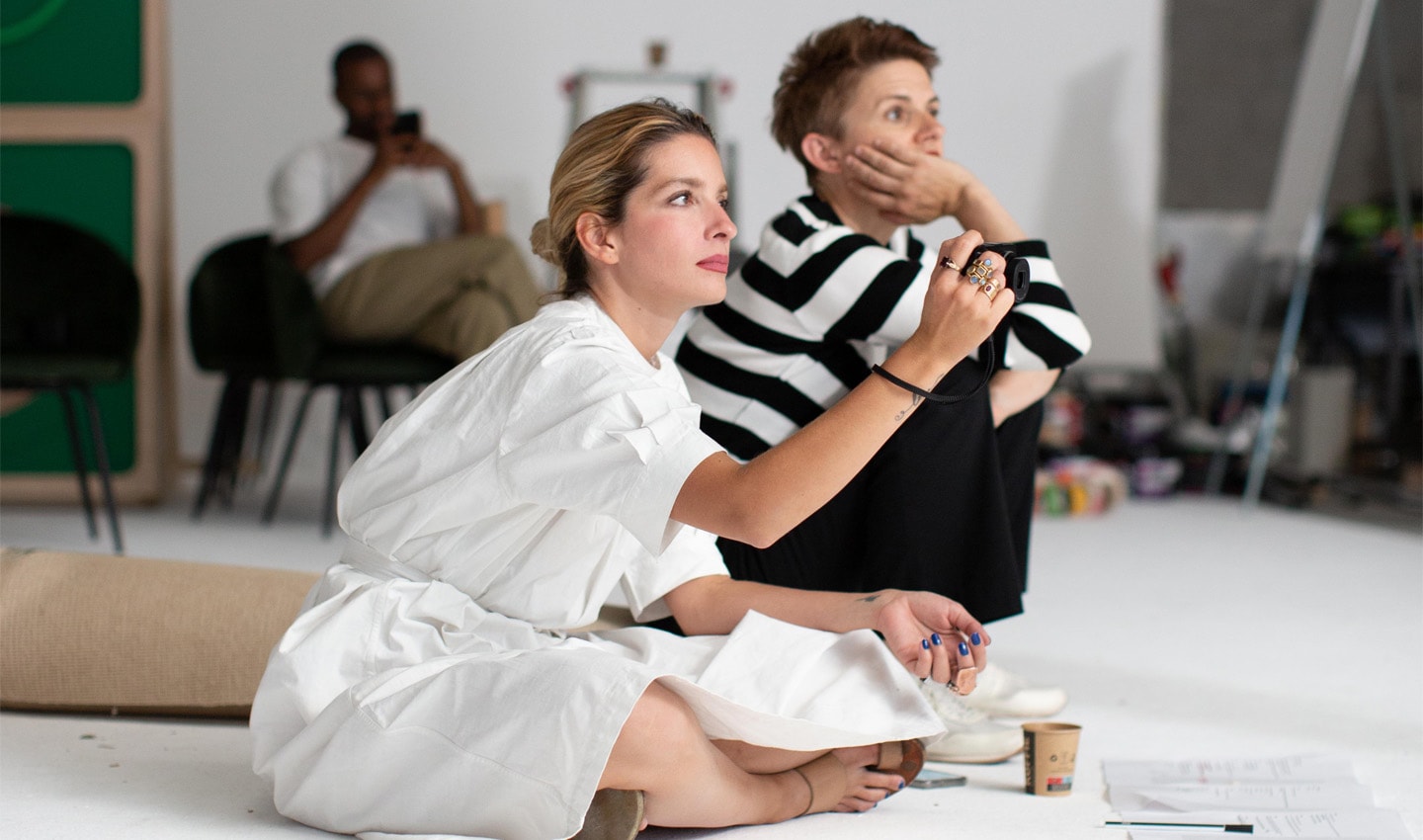 Mafe Maldonado and Becky Churilla watching a take.
Mafe Maldonado and Becky Churilla watching a take.TT: Was it difficult to get the film approved and funded?
BC: Honestly? No. Perhaps had we pitched this a year or two earlier, it would have been more challenging. But with the current team in place and credibility we’ve built, the process from pitching to approvals to planning and production moved quickly.
We did have a moment with the management board where there was slight push back on the idea of the mapmaking machine and the world we wanted to build, but I defended it and asked for space to develop it. That was easy because I believed the idea was right and knew Mafe would bring it to life beyond anyone’s expectations.
TT: And what did the process look like post pitch?
BC: That’s when the real fun and work begins. A lot of thinking went into the front part of the process. There were so many things to communicate, realities to deal with. Mafe and I had been talking about the ground truth mapping has the potential to create (a bit heady so we needed to bring that idea down to earth) for quite some time, so we had a lot of ideas percolating we needed to distil.
I always feel pressure being the first part of the process — especially on something like this. If the structure and writing is off, things will collapse quickly once shooting begins. But being surrounded by people who are super talented and committed to doing their best, inspires me to push my work as far as it can go.
TT: What was the production like?
BC: Since we were working within a tight timeframe and because this was our first time as a team doing something like this on such a large scale, I structured and wrote the film in sections. I thought that would make it more manageable and make planning a bit easier (stay ahead of each section, take things as they come). Matt Beedham, our editorial lead writer, helped with interviews, research and questions, and Courtney Williamson, a wonderful writer and amazingly generous, thoughtful colleague, was my go-to for all things mapmaking.
Shooting in the height of summer holidays was a challenge. It was great when someone was interested and willing, but were they available? I stayed flexible and worked around dates of people essential to the narrative of the film. This was a bit catch-as-catch-can but was imperative to the film’s final content.
With interviews booked and travel arranged (thank you, Ops team), Steven Smith (Art Director, Moving content) Kaspar Schoeller (Sr. Video & Motion Designer), Matt and a small film crew, set out across Cologne, Berlin, Munich, Eindhoven, London, San Jose, San Francisco and back to Amsterdam to gather all the content.
With Steven and Kaspar directing the look and feel and overseeing continuity, Matt conducted over 25 interviews, including two roundtable conversations. With Matt handling all the conversations, he was able to maintain the red thread and pick up recurring underlying themes. Huge credit to Matt’s depth of knowledge and natural style of interviewing – he’s great at putting people at ease and giving them the space to shine. You really see the effect of that in the film. 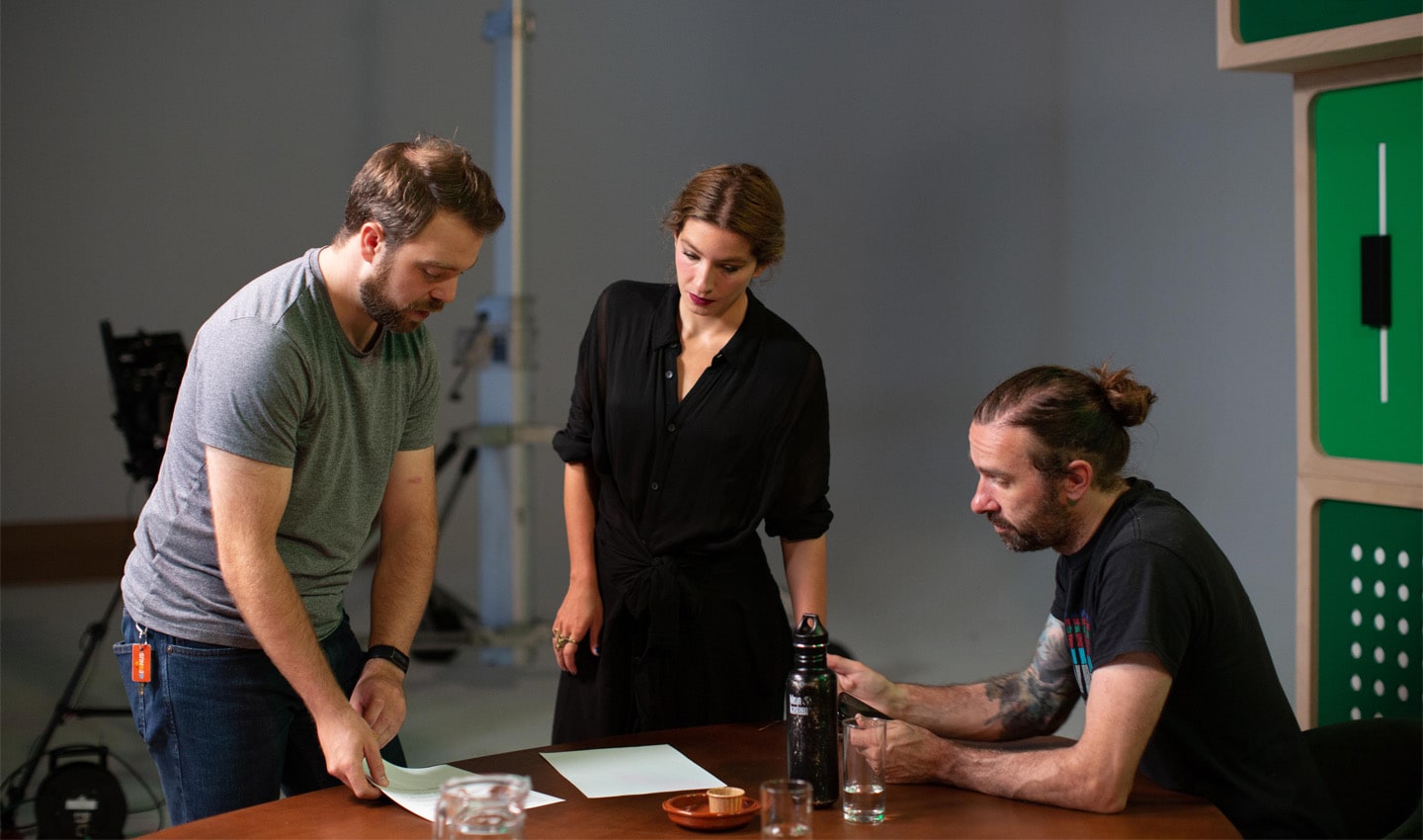 Matt Beedham, Mafe Maldonado and Steven Smith talking things over on set.
Matt Beedham, Mafe Maldonado and Steven Smith talking things over on set.
TT: Were there any moments you were worried everything would fall apart, not be done well or be ready on time?
BC: All the time – so many moments of cold panic! The refrain of: “What did we get everyone into? Are we going to be able to finish everything in time?” was on a loop in my head at times in the evenings. That’s part of the natural self-doubt I think creatives have. I think it was spurred on mostly by the fact that there were so many moving parts and things that needed to happen.
Once I get into execution, I am incredibly task oriented, so I like to get things done, keep things moving.
During the day, my stress was under control because I was working, ticking things off the list. Under cloak of darkness, stress would rear its head.
The fear went away once I saw the first rough cut of the film tip to tail. I knew then we had the base of a good film, we just needed to sort the transitions and tighten up. But the pieces were there.
TT: Obviously, you stepped out of the box with the overall idea and approach but from a process or way of working, what else was different?
BC: Love that question. I’ll try not to geek out and get too much into the details.
There were a lot of seemingly small things that were crucial to the overall quality of the film. While TomTom isn’t a behemoth in terms of size, it’s a big company with an established culture. There are things you get used to until you pull back the lens and see they need to be challenged.
A difference in making Build it Forward, we ‘cast’ the film, meeting and interviewing dozens and dozens of employees. Not only did this let us see who would help fill in the story, it gave us an even deeper understanding of the business.
Thanks to the support and trust of Corinne and Kaaren, we were given nearly full free reign in making the film. We were able to ‘protect the egg’ (any fellow Cobra Kai fans with me?) to make the best, most complete work possible.
We had regular check-ins with Corinne and Kaaren, sharing interviews, sections of film as they became available. They provided invaluable feedback and guidance, never edicts. The process was very collaborative, open and honest.
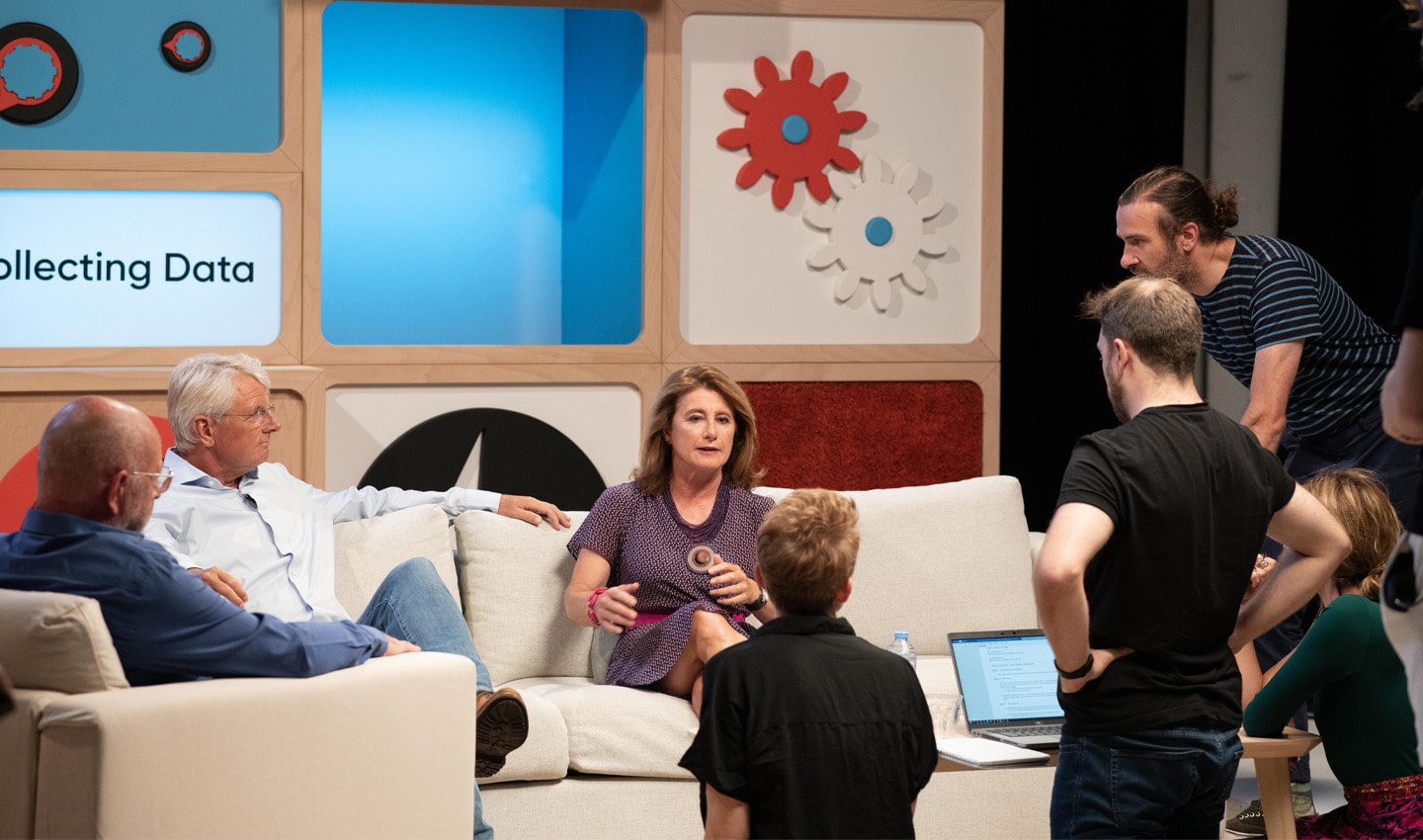 On set with Alain De Taeye, Board Member, Harold Goddijn, Founder and CEO, and Corinne Vigreux, Founder and CMO.
On set with Alain De Taeye, Board Member, Harold Goddijn, Founder and CEO, and Corinne Vigreux, Founder and CMO.TT: What did you learn from making the film that surprised you?
BC: It wasn’t a surprise, but just seeing our team bring it and unleash the full breadth of their talent. Watching Kaspar, who has been with TomTom since he was an intern, really put his filmmaking and editing talent on display, is beyond gratifying. I love seeing great people do great work they are really proud of.
And once and for all, settling the debate of what’s more important: the idea or execution? I am one hundred percent ‘team execution’ after this experience.
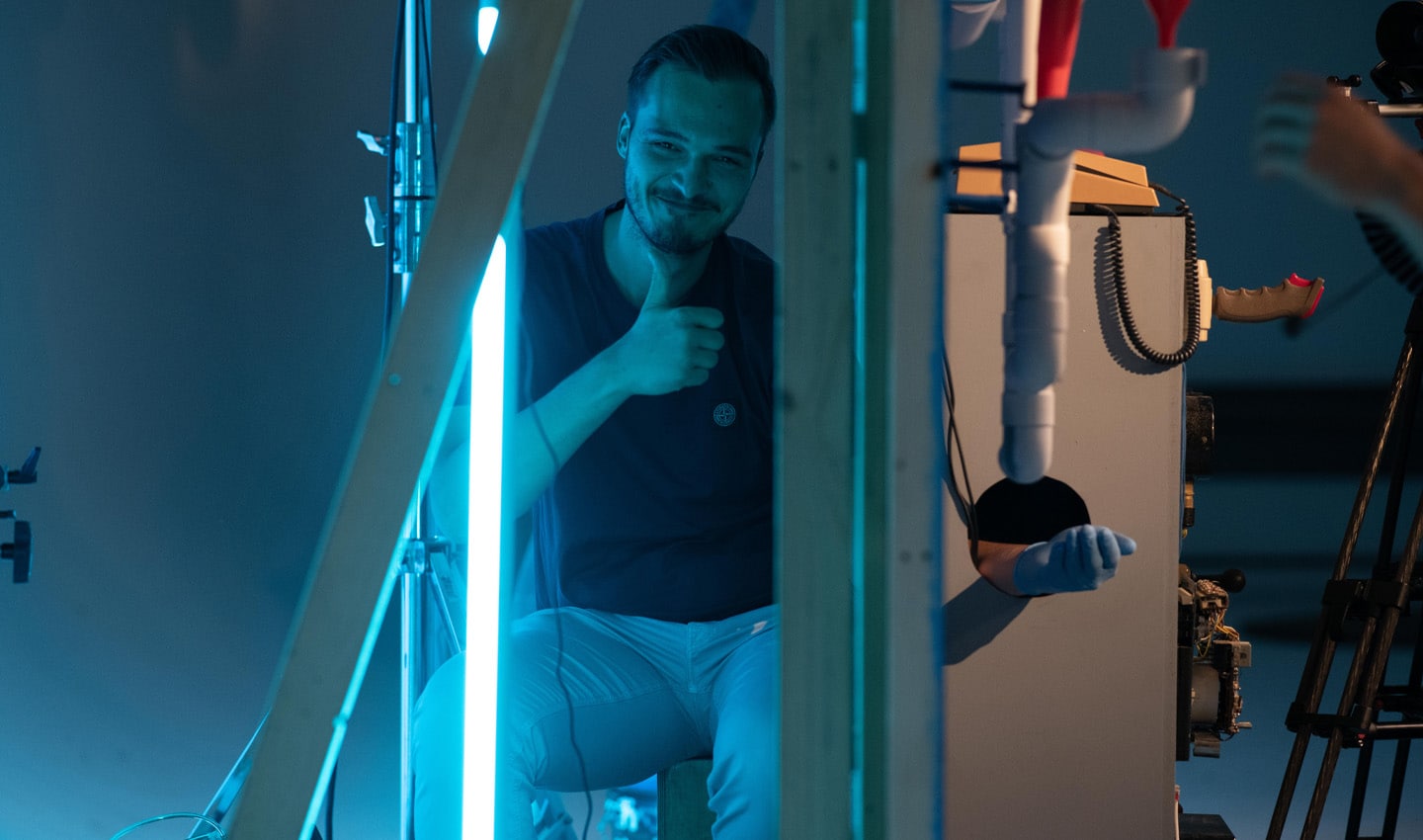 Kaspar Schoeller behind the scenes (quite literally).
Kaspar Schoeller behind the scenes (quite literally).TT: What’s your favorite part of the film or experience in making it?
BC: This project is everything I love about being part of a creative team. Sure, you can come in and say “so and so did this, this was X’s idea, on and on” but that misses the point. It’s really about the collective effort, everyone bringing their different skill sets to make a piece of work we feel best satisfies the brief. And the good times we have making things together – even when things get hairy, we keep it fun and loose. There were so many days I was practically skipping to work because I was excited to see the team and hunker down in our creative room.
The premiere itself was an experience I will never forget. We went in feeling confident that the film is objectively a good piece of content. We had shown it to a few select people and a small focus group of employees, who responded very positively, so that was encouraging as well.
So, we felt good about the work, but you can’t predict how it will land in the wild. But there was nothing else to do at that point except have fun and get ready.
It was a bit strange when the film began, I was trying not to watch people watch it. But then everyone reacted in the way we hoped they would. We were blown away by the positive feedback after. People at TomTom are, overall, incredibly kind and considerate and honest – but that doesn’t mean they shy away from giving constructive criticism.
This was the first time we got 100% positive reviews across the board. To hear people say they got goosebumps, and they are excited for the future, it means we did our job. 😊
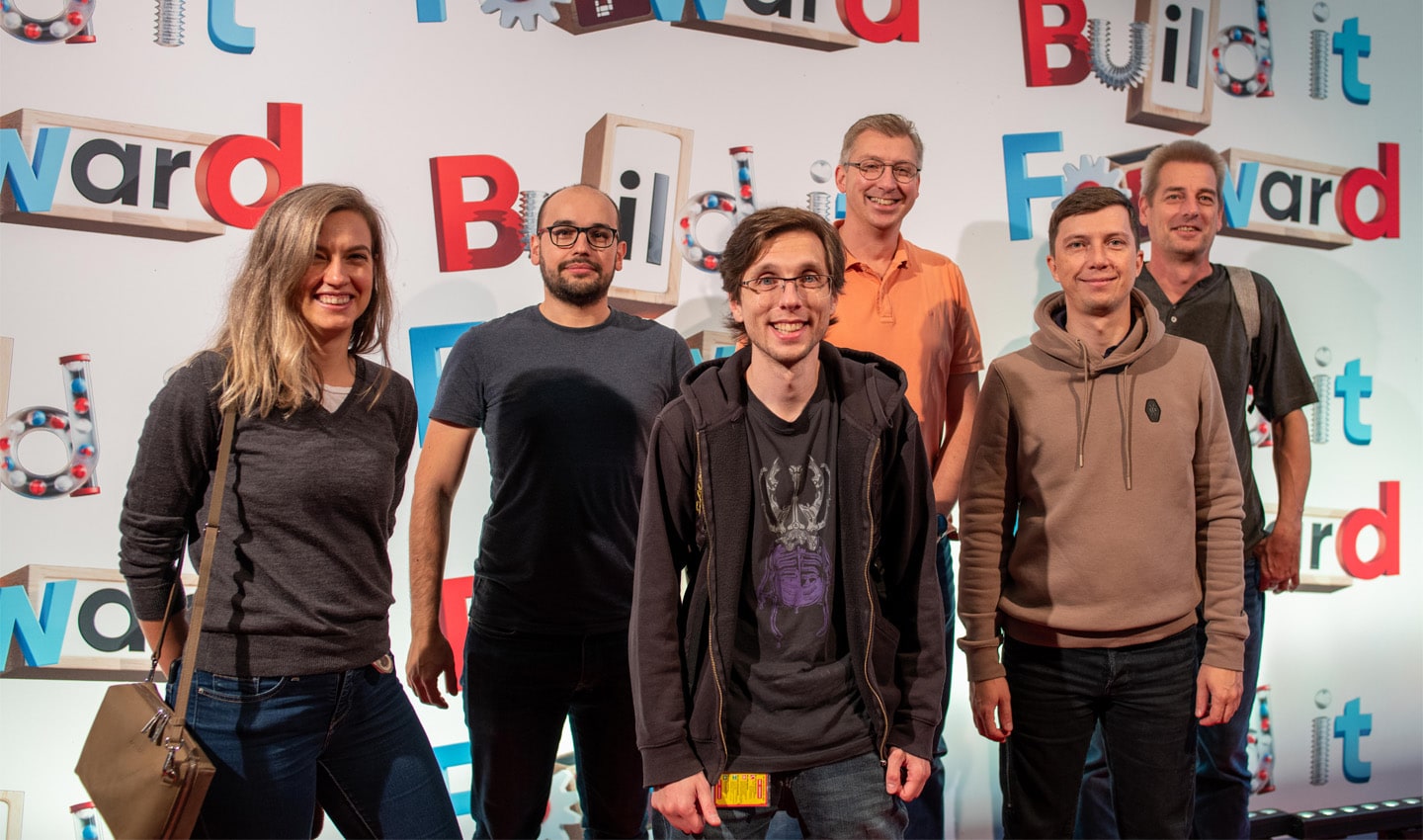 All who enter must first pass the red carpet. Pictured, a group of TomTom'ers ready to watch the documentary in DeLamar Theatre, Amsterdam.
All who enter must first pass the red carpet. Pictured, a group of TomTom'ers ready to watch the documentary in DeLamar Theatre, Amsterdam.TT: What’s next?
BC: Well, we will release an external version of the film. We also have a very cool ‘pilot’ episode within the film that we will release on YouTube that will be turned into a series. We will continue to shoot and add interviews filmed in the same style. And we have a few other new initiatives in the works. So, stay tuned.
People also read
)
Super sources will power the 'freshest map on the planet.' But what are they?
)
The world needs a better map: TomTom is making it with its new Orbis Maps and ecosystem
)
Meet the devs that coded their way out of the coronavirus chip shortage
)
TomTom begins supporting MapLibre with $10,000 donation
* Required field. By submitting your contact details to TomTom, you agree that we can contact you about marketing offers, newsletters, or to invite you to webinars and events. We could further personalize the content that you receive via cookies. You can unsubscribe at any time by the link included in our emails. Review our privacy policy. You can also browse our newsletter archive here.
)